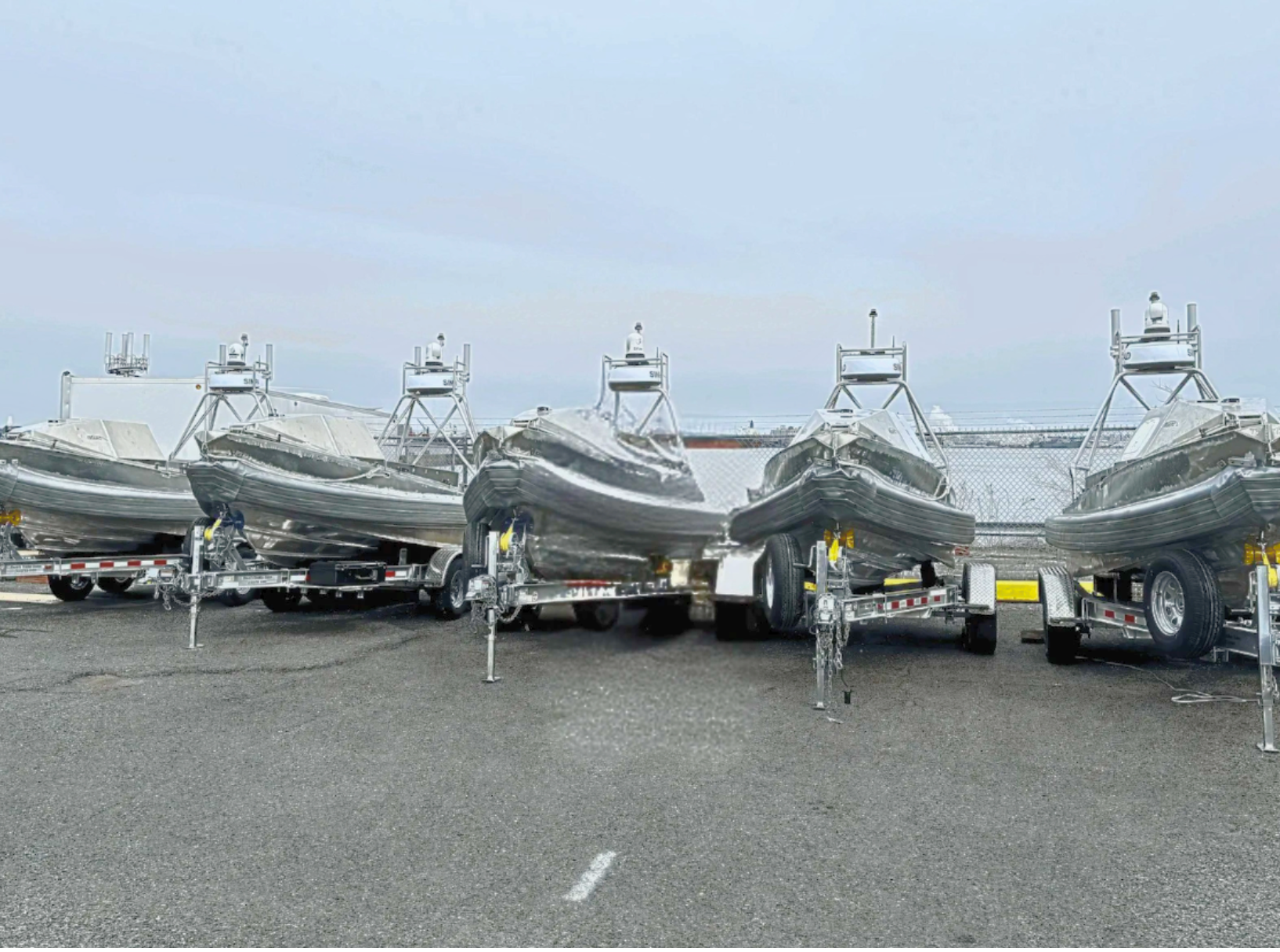
American USV Builders Anticipate Mass Demand from U.S. Navy
The U.S. Navy is ramping up its focus on unmanned surface vessels (USVs), with plans to establish Unmanned Surface Vessel Squadron 7 (USVRON 7) in San Diego by mid-2025. As part of this effort, the Navy is expanding its use of the Global Autonomous Reconnaissance Craft (GARC), a 16-foot autonomous USV built by Maritime Applied Physics Corporation (MAPC). Production is set to scale up to 32 units per month, reinforcing the demand for cost-effective, high-volume unmanned systems. With its proven performance and affordability—under $1 million per vessel—GARC is a key component in the Department of Defense’s push for mass-procured autonomous capabilities. The Pentagon’s Replicator program has allocated funding for swarming unmanned systems, further highlighting the need for scalable USV solutions.

Got Scale?: BlackSea Technologies is leading the charge in high-rate production for naval superiority
American industry once defined what it meant to build at scale—and it’s happening again. BlackSea Technologies is driving high-rate production for the Navy’s future fleet, delivering autonomous systems at the speed of relevance. While China’s shipbuilding machine churns ahead, the U.S. must embrace a new model: distributed, attritable platforms built and deployed in volume. The demand isn’t theoretical; the production can’t be, either. With two high-output facilities and a commitment to uninterrupted manufacturing, we’re already producing 32 GARCs per month—because warfighters need hardware, not concepts. The question isn’t whether large-scale production is possible. The question is: Got Scale?

GARCs and Liberty Ships: Bellwether Defense Initiatives
In Baltimore Harbor, a new era of naval innovation is taking shape with the assembly of the Global Autonomous Reconnaissance Craft (GARC), an advanced unmanned system designed to meet today's naval needs. Echoing the urgency and scale of America’s shipbuilding history during WWII, GARC represents a key development in the Department of Defense's push for scalable autonomous systems. As demand for these systems grows, consistent production and predictable orders are essential to maintaining readiness and ensuring a sustainable defense manufacturing future.

Tonnage Cannot Fully Define Fleet Lethality
For too long, naval power has been measured in tons of steel, but modern warfare demands a different approach. This article explores why the Navy must shift its focus from ship size to sensor networks, firepower, and autonomous systems. With Distributed Maritime Operations (DMO) shaping the future, smaller, more agile platforms—like unmanned systems—are proving their value.

VIDEO: GARC Navigates in Rough Seas with Ease
Built for the storm. Designed for the fight. GARC takes on high-level sea states without breaking stride. GARC is a 16’ unmanned surface vessel (USV) currently being used by the US Navy.

The Rise of the Drone Boats
The 2002 Millennium Challenge war game exposed vulnerabilities in U.S. naval strategy when a Red Team, using asymmetric tactics, overwhelmed the superior Blue Team, sinking 19 warships in minutes. The Pentagon later constrained the exercise to force a U.S. victory, ignoring key lessons. Today, those lessons are playing out globally, as Ukraine and Houthi rebels use unmanned surface vessels (USVs) and swarm tactics to challenge more powerful navies. The U.S. Navy is now investing heavily in autonomous systems to counter emerging threats.

BlackSea Technologies Hosts Rear Admiral Ryan Perry for Executive Engagement Visit
BlackSea Technologies had the honor of hosting Rear Admiral Ryan Perry, U.S. Navy Chief of Information, at its Fort Lauderdale location as part of the Navy’s Executive Engagement Visit (EEV) program.

Navy to establish USVRON 7 in San Diego, adding another robotic ship squadron to the force
The Navy is set to establish Unmanned Surface Vessel Squadron 7 (USVRON 7) in May, further expanding its fleet of small autonomous vessels like the Global Autonomous Reconnaissance Craft (GARC). This move aligns with Chief of Naval Operations Adm. Lisa Franchetti’s push to rapidly integrate robotic and autonomous systems, ensuring the force remains prepared for future conflicts, including a potential confrontation with China in the Taiwan Strait. With the Navy aiming to produce up to 32 GARCs per month, USVRON 7 will play a key role in scaling, operating, and maintaining these platforms to enhance maritime warfare capabilities.

Pentagon Ramps Up Tech Development for Replicator Program
The Replicator program is redefining the speed and scale of software development within the Defense Department, aiming for full deployment by August 2025. Rear Adm. Christopher Sweeney emphasized the initiative’s break from traditional defense projects, highlighting its rapid iteration cycles and commercial-style software development tempo. With industry collaboration and accelerated feedback loops, Replicator is poised to enhance autonomous system capabilities across air and maritime domains while reducing manpower requirements and improving system interoperability.

First Replicator Initiative Capability on Track for August, Officials Say
The Navy's Replicator initiative, designed to deploy lethal swarms of unmanned systems, is set to achieve its first operational milestone by August, officials announced at the West 2025 conference. The program, aimed at countering threats in the Indo-Pacific, seeks to rapidly integrate diverse autonomous systems through a flexible software-driven approach, departing from traditional acquisition timelines. However, while the initiative has secured initial funding, questions remain about long-term implementation and coordination between military branches and the Pentagon.

